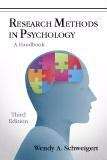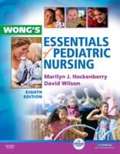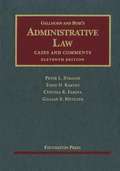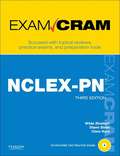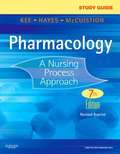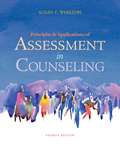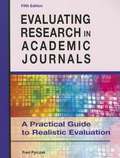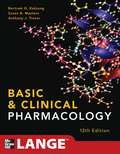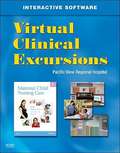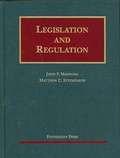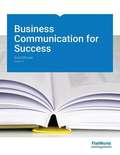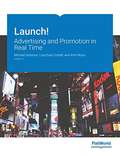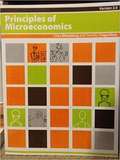- Table View
- List View
Introduction to Economic Analysis
by R. Preston Mcafee Tracy R. LewisThis book presents standard intermediate microeconomics material and some material that, in the authors' view, ought to be standard but is not. Introductory economics material is integrated. Standard mathematical tools, including calculus, are used throughout. The book easily serves as an intermediate microeconomics text, and can be used for a relatively sophisticated undergraduate who has not taken a basic university course in economics. The focus of this book is on the conceptual tools and not on fluff. As such, it reflects the approach actually adopted by the majority of economists for understanding economic activity. There are lots of models and equations, and no pictures of economists ;-) Economic analysis is used in many situations. When British Petroleum sets the price for Alaskan crude oil, it uses an estimated demand model, both for gasoline consumers and also for the refineries to which BP sells. Economic analysis was used by experts in the antitrust suit brought by the U.S. Department of Justice both to understand Microsoft s incentive to foreclose (eliminate from the market) rival Netscape and consumer behavior in the face of alleged foreclosure. Stock market analysts use economic models to forecast the profits of companies to predict the price of their stocks. When the government forecasts the budget deficit or considers a change in environmental regulations, it uses economic models. This book presents the building blocks of the models in common use by an army of economists thousands of times per day. This book, plus econometrics, provides most of the economic analysis tools to take upper division economics courses of any type.
Research Methods in Psychology: A Handbook
by Wendy A. SchweigertThis handbook provides a brief but thorough introduction to the most commonly used research methods in psychology (as well as a number of related topics such as statistics, ethics, and literature searches). The book includes much of the same information presented in longer texts, but in a more succinct format.
Wong's Essentials of Pediatric Nursing (8th Edition)
by Marilyn J. Hockenberry David Wilson Kelley WardThe #1 pediatric nursing textbook on the market, this book is known for its accuracy, current research, and highly readable writing style. It provides a foundation in child development and health promotion, and covers specific health problems - organized by age groups and body systems, so you can individualize care at the appropriate level for each child. A streamlined approach, superior illustrations, and a full-color design make it easy to find and understand key nursing information. A family focus emphasizes the role and influence of the family in health and illness. A "wellness" emphasis includes age-specific information on health promotion and injury prevention relevant to specific age groups, and discusses play, safety, language, self-esteem, nutrition, dental health, sleep, exercise, and sexuality. Detailed presentations of pathophysiology in disorder sections provide a clear understanding of the impact of disease on normal physiologic functions. Critical thinking exercises help you apply your knowledge and clinical judgments to specific situations. Nursing Care Guidelines boxes provide clear, step-by-step instructions for performing specific skills or procedures. Evidence-Based Practice boxes help you apply research and critical thought processes to support and guide the outcomes of nursing care. Atraumatic Care boxes provide guidance for administering nursing care with minimal pain or stress to the child, family, and nurse. Ethical case studies reflect complex patient care situations and illustrate proper consideration in care delivery. Community Focus boxes emphasize community issues and provide additional resources on caring for children outside the clinical setting. Emergency Treatment boxes provide quick reference in critical situations. Nursing Alerts provide critical information and Nursing Tips provide helpful hints. Cultural Awareness boxes highlight ways in which variations in beliefs and practices affect child care. Chapter Outlines and Learning Objectives guide your approach to learning. Key Points help you review and learn important concepts. Up-to-date references highlight research and focus your review of important content. Spanish-English translations in the appendix feature words and phrases commonly used in nurse-parent interactions. Related Topics and Additional Resources in each chapter refer you to related information inside the book and in ancillary materials. Free companion CD features NCLEX exam-style review questions, animations, critical thinking questions, case studies, modifiable nursing care plans, pediatric assessment video clips, illustrated pediatric skills, anatomy reviews, and more. New Pain Assessment and Management in Children chapter consolidates coverage of this subject for easy reference. Nursing care plans provide a model for planning patient care, including nursing diagnoses, patient/family goals, nursing interventions/rationales, expected outcomes, and newly included NIC and NOC classifications. Family-Centered Care boxes help you prepare families to cope with their child's care in special situations, providing information on patient teaching, home care, and incorporating the family in the child's care. Nursing process boxes provide streamlined, accessible information on major diseases and conditions.
Postgraduate Orthopaedics: Mcqs and Emqs for the Frcs (Tr & Orth)
by Kesavan Sri-RamWhat do you need to do before sitting the written component of the FRCS (Tr and Orth) examination? Practice, practice, practice. Sadly the MCQs and EMQs in the actual examination are not this straightforward. This book will help the orthopaedic surgeon preparing for the written part of the examination to be ready to face the task ahead. The MCQs and EMQs appear in the same format as the examination and cover the syllabus topics. Divided into subspecialty chapters, including trauma and basic science, this book is ideal for use alongside a revision plan. The questions have detailed answers and selected references, arming readers with the knowledge they need to approach the topic correctly. Written by recent, successful examination candidates, this question-and-answer-based revision guide is ideal preparation for the FRCS (Tr and Orth) examination as well as being helpful for other postgraduate orthopaedic exams.
Adaptive Technologies for Training and Education
by Paula J. Durlach Alan M. LesgoldThis edited volume provides an overview of the latest advancements in adaptive training technology. Intelligent tutoring has been deployed for well-defined and relatively static educational domains such as algebra and geometry. However, this adaptive approach to computer-based training has yet to come into wider usage for domains that are less well defined or where student-system interactions are less structured, such as during scenario-based simulation and immersive serious games. In order to address how to expand the reach of adaptive training technology to these domains, leading experts in the field present their work in areas such as student modeling, pedagogical strategy, knowledge assessment, natural language processing and virtual human agents. Several approaches to designing adaptive technology are discussed for both traditional educational settings and professional training domains. This book will appeal to anyone concerned with educational and training technology at a professional level, including researchers, training systems developers and designers.
Time Limited Interests in Land
by Cornelius Van Der Merwe Alain-Laurent VerbekeA comprehensive comparative treatment of six instances of time-limited interests in land as encountered in fourteen European jurisdictions. The survey explores the commercial or social origins of each legal institution concerned and highlights their enforceability against third parties, their content and their role in land development. The commercial purpose of residential and agricultural leases is contrasted with the social aim of personal servitudes (and its common-law equivalent liferent) to provide sustenance for life to mostly family members making the latter an important estate planning device. Whereas the ingrained principles of leases and personal servitudes restrain the full exploitation of land, it is indicated that public authorities and private capital could combine to turn the old-fashioned time-limited institutions of hereditary building lease (superficies) and hereditary land lease (emphyteusis) into pivotal devices in alleviating the acute shortage of social housing and in promoting the fullest exploitation of pristine agricultural land.
Gellhorn and Byse's Administrative Law: Cases and Comments (11th Edition)
by Peter L. Strauss Todd RakoffThis authoritative casebook presents a comprehensive treatment of the doctrinal basis of administrative law that students need to know to practice competently and also a substantial development of the scholarly literature that has, from many perspectives, critiqued the existing law. The 11th edition continues the tradition of offering instructors a rich theoretical, historical and political context for the cases. At the same time, recognizing changing pedagogical demand, the book offers a leaner presentation of many topics and more cues for helping students navigate the book.
Exam Cram: NCLEX-PN (3rd Edition)
by Wilda Rinehart Diann Sloan Clara HurdSucceed with topical reviews, practice exams, and preparation tools "The book offers a quick 'cram' approach to the NCLEX that is user friendly and not time intensive. The overall approach is learner-centered and the content is well paced. " --Catherine Dearman, RN, PhD Covers exactly what you need to know to score higher on your NCLEX-PN® exam. Includes 400 sample test questions to help you determine whether you're ready to take the actual exam. Our popular Cram Sheet tearcard helps you remember key concepts. Exam Alerts provide important information found on the exam. Simplifies pharmacology for easy learning. Written by Leading Nursing Experts! Wilda Rinehart has R. N. , B. S. N. , M. S. N. , F. N. C. , and F. P. N. P. degrees. Her experience includes staff nurse in surgery, labor and delivery; public-health nurse; and family-planning nurse practitioner. She also was an instructor of surgical and obstetrical nursing. Diann Sloan has R. N. , B. S. N. , M. S. N. , F. N. C. , as well as MS. Ed. and Ph. D. in Education degrees. She has worked as a staff nurse in surgical nursing, pediatrics, and neonatal intensive care and as a pediatric nurse clinician. She has also been an instructor of pediatric and psychiatric nursing. Clara Hurd has M. S. N. , R. N. , and C. N. E. degrees. She has worked with Pearson as a consultant on item writing. She has 31 years of experience and has worked as a staff nurse in medical-surgical nursing and the surgical intensive care unit. Ms. Hurd has taught in associate and baccalaureate nursing programs. Score Higher on the NCLEX-PN® Exam! The CD features innovative Computer Adaptive Testing software, giving you an effective tool to assess your readiness for the NCLEX-PN® exam. Key features include: Detailed explanations of correct and incorrect answers Multiple test modes Random questions and order of answers System Requirements: Microsoft Windows XP, Microsoft Vista or Microsoft Windows 7 Pentium class 1GHz processor (or equivalent) 256MB RAM 30MB Hard Drive Space Category: Test Preparation and Review Covers: Nursing NCLEX-PN® is a registered trademark of the National Council of State Boards of Nursing, Inc. (NCSBN), which does not sponsor or endorse this product.
Study Guide for Pharmacology: A Nursing Process Approach (7th Edition, Revised Reprint)
by Joyce Lefever Kee Evelyn R. Hayes Linda E. Mccuistion Nancy HaugenThis comprehensive Study Guide is designed to provide the learner with clinically based situation practice problems and questions. This book accompanies the text Pharamacology: A Nursing Process Approach, seventh edition, and may also be used independently of the text.
Principles and Applications of Assessment in Counseling (4th Edition)
by Susan C. WhistonThis text, created specifically for counseling students, provides with a comprehensive introduction to appraisal and assessment and focuses on the importance of using assessment results to evaluate the efficacy of counseling. With cases studies found throughout, students will easily learn to apply principles to real life.
Evaluating Research in Academic Journals (5th Edition)
by Fred PyrczakWhen students in the social and behavioral sciences take advanced courses in their major field of study, they are often required to read and evaluate original research reports published as articles in academic journals. This book is designed as a guide for students who are first learning how to engage in this process.
Basic and Clinical Pharmacology (12th Edition)
by Bertram Katzung Susan Masters Anthony TrevorThe most up-to-date, comprehensive, and authoritative pharmacology text in health medicine. Enhanced by more than three hundred illustrations -- many in full color. Organized to reflect the syllabi in many pharmacology courses and in integrated curricula, Basic & Clinical Pharmacology, 12e covers the important concepts students need to know about the science of pharmacology and its application to clinical practice. Selection of the subject matter and order of its presentation are based on the authors' many years experience in teaching this material to thousands of medical, pharmacy, dental, podiatry, nursing, and other health science students. To be as clinically relevant as possible, the book includes sections that specifically address the clinical choice and use of drugs in patients and the monitoring of their effects, and case studies that introduce clinical problems in many chapters. Presented in full color and enhanced by more than three hundred illustrations, Basic & Clinical Pharmacology features numerous summary tables and diagrams that encapsulate important information. Coverage that spans every aspect of medical pharmacology: Basic principles Autonomic drugs Cardiovascular-renal drugs Drugs with important actions on smooth muscles Central nervous system drugs Drugs used to treat anemias, clotting disorders, hyperlipidemia, and inflammation and gout Endocrine drugs Chemotherapeutic and immunologic drugs Toxicology Special subjects (perinatal, geriatric, and dermatologic pharmacology) Botanical and "food supplements," and over-the-counter medications Prescribing Also in this edition: Drug Summary Tables conclude most chapters, providing a concise summary of the most important drugs General concepts relating to newly discovered receptors, receptor mechanisms, and drug transporters Descriptions of important new drugs, including monoclonal antibodies
Virtual Clinical Excursions: Obstetrics-Pediatrics
by Kelly Ann Crum Patrick Barrera David Wilson Marilyn J. HockenberryVirtual Clinical Excursions guides you through a virtual hospital setting where the patients are real and their conditions are constantly changing. Each lesson has a textbook reading assignment and activities based on "visiting" the patients in the hospital, which provide a perfect environment in which you may "practice" what you are learning.
Behavioral Neurology & Neuropsychiatry
by David B. Arciniegas C. Alan Anderson Christopher M. Filley T. Angelita GarciaThe merger of behavioral neurology and neuropsychiatry into a single medical subspecialty, Behavioral Neurology & Neuropsychiatry, requires an understanding of brain-behavior relationships and a clinical approach that transcends the traditional perspectives of neurology and psychiatry. Designed as a primer of concepts and principles, and authored by a multidisciplinary group of internationally known clinical neuroscientists, this book divides into three sections: * Structural and Functional Neuroanatomy (Section I) addresses the neuroanatomy and phenomenology of cognition, emotion, and behavior * Clinical Assessment (Section II) describes neuropsychiatric history taking, neurological and mental status examinations, neuropsychological assessment, and neuroimaging, electrophysiologic, and laboratory methods * Treatment (Section III) discusses environmental, behavioral, rehabilitative, psychological, social, pharmacological, and procedural interventions for cognitive, emotional, and behavioral disorders. By emphasizing the principles of Behavioral Neurology & Neuropsychiatry, this book will improve your understanding of brain-behavior relationships and inform your care of patients and families affected by neurobehavioral disorders. David B. Arciniegas, MD is the Michael K. Cooper Professor of Neurocognitive Disease, Director of the Neurobehavioral Disorders Program, and Associate Professor of Psychiatry and Neurology at the University of Colorado School of Medicine. C. Alan Anderson, MD is Professor of Neurology, Emergency Medicine, and Psychiatry at the University of Colorado School of Medicine, and Staff Neurologist at the Denver Veterans Affairs Medical Center. Christopher M. Filley, MD is Professor of Neurology and Psychiatry, and Director of the Behavioral Neurology Section at the University of Colorado School of Medicine, and Neurology Service Chief at the Denver Veterans Affairs Medical Center.
Legislation and Regulation
by John F. Manning Matthew C. StephensonThis casebook is specifically designed for a first-year class on Legislation Regulation, and provides a proven, ready-to-use set of materials for schools or instructors interested in introducing such a class to their 1L curriculum.
Risk Management for Enterprises and Individuals
by Etti Baranoff Patrick Lee Brockett Yehuda KahaneThis book is intended for the Risk Management and Insurance course where Risk Management is emphasized. When we think of large risks, we often think in terms of natural hazards such as hurricanes, earthquakes or tornados. Perhaps man-made disasters come to mind such as the terrorist attacks in the U.S. on September 11, 2001. Typically we have overlooked financial crises, such as the credit crisis of 2008. However, these types of man-made disasters have the potential to devastate the global marketplace. Losses in multiple trillions of dollars and in much human suffering and insecurity are already being totaled, and the global financial markets are collapsing as never before seen. We can attribute the 2008 collapse to financially risky behavior of a magnitude never before experienced. The 2008 U.S. credit markets were a financial house of cards. A basic lack of risk management (and regulators' inattention or inability to control these overt failures) lay at the heart of the global credit crisis. This crisis started with lack of improperly underwritten mortgages and excessive debt. Companies depend on loans and lines of credit to conduct their routine business. If such credit lines dry up, production slows down and brings the global economy to the brink of deep recession or even depression. The snowballing effect of this failure to manage the risk associated with providing mortgage loans to unqualified home buyers have been profound, indeed. When the mortgages failed because of greater risk- taking on the Street, the entire house of cards collapsed. Probably no other risk-related event has had, and will continue to have, as profound an impact world wide as this risk management failure. How was risk in this situation so badly managed? What could firms and individuals have done to protect themselves? How can government measure such risks (beforehand) to regulate and control them? These and other questions come to mind when we contemplate the consequences of this risk management fiasco. Standard risk management practice would have identified sub-prime mortgages and their bundling into mortgage-backed-securities as high risk. People would have avoided these investments or would have put enough money into reserve to be able to withstand defaults. This did not happen. Accordingly, this book may represent one of the most critical topics of study that the student of the 21st century could ever undertake. Risk management will be a major focal point of business and societal decision making in the 21st century. A separate focused field of study, it draws on core knowledge bases from law, engineering, finance, economics, medicine, psychology, accounting, mathematics, statistics and other fields to create a holistic decision-making framework that is sustainable and value- enhancing. This is the subject of this book.
Business Communication for Success
by Scott McleanThis book is suited for Business Communication courses, but is also appropriate for Business English, Business Presentation, Professional Communication courses. Scott McLean brings his authoring expertise to this new communications textbook. Scott has authored textbooks in the areas of Speech Communication, Interpersonal Communication and Public Speaking. Business Communications for Success benefits from Scott's extensive understanding of how students learn the art of effective communication. Students are provided ample opportunity to engage with the concepts, vocabulary and models covered in the text, including role-playing exercises, journal writings, case studies, small-group activities, games, and self-assessment activities.
Launch! Advertising and Promotion in Real Time
by Michael Solomon Lisa Duke Cornell Amit NizanLaunch! is written for advertising and promotions courses taught to students in the business school and journalism & mass communication students. This book is the first of its kind to teach advertising concepts by reverse engineering a real advertising campaign from beginning to end. In April 2007, SS+K, an innovative New York City communications agency, launched the first ever branding campaign for msnbc.com with the tag "A Fuller Spectrum of News." Launch! follows that campaign from initial agency pitch through roll-out of print and media assets to post-campaign analysis. Throughout, it exposes readers to the theory and concepts of advertising and promotion, and the personalities and decisions that drove this campaign. The book takes a rare look "behind the curtain" - even letting you see some of the paths not chosen by the agency and client. Students get a realistic sense of how theory plays out in practice. They get a flavor for the exciting field of advertising. And, they consistently learn the perspectives of both the advertising agency (where many journalism and communications students will work) and the client (where many marketing majors will work). This is a unique book, with a unique perspective, by a unique author team, and you won't find this kind of insight in any other text on the market.
Principles of Microeconomics 2.0
by Libby Rittenberg Timothy TregarthenFlat World Knowledge is honored to publish Version 2.0 (an orginal re-launch) of Tim Tregarthen's wonderful principles of microeconomics book, and proud to bring Tim's incredible talents as a teacher back to life so future generations of students can continue to learn from him.
Organizational Behavior v 1.1
by Talya Bauer Berrin ErdoganTwo leading researchers in Management, Talya Bauer and Berrin Erdogan, bring you a new Organizational Behavior textbook that bridges the gap between theory and practice with a distinct "experiential" approach. On average, a worker in the USA will change jobs 10 times in 20 years. In order to succeed in this type of career situation, individuals need to be armed with the tools necessary to be life-long learners. To that end, this book is not be about giving students all the answers to every situation they may encounter when they start their first job or as they continue up the career ladder.
Principles of Management
by Mason Carpenter Talya Bauer Berrin ErdoganPrinciples of Management by Carpenter, Bauer and Erdogan teaches management principles to tomorrow's business leaders by weaving three threads through every chapter: strategy, entrepreneurship and active leadership. Strategic: All business school teachings have some orientation toward performance and strategy and are concerned with making choices that lead to high performance. Principles of Management will frame performance using the notion of the triple bottom-line the idea that economic performance allows individuals and organizations to perform positively in social and environmental ways as well. The triple bottom line is financial, social, and environmental performance. It is important for all students to understand the interdependence of these three facets of organizational performance. The Entrepreneurial Manager: While the General Management course at Harvard Business School was historically one of its most popular and impactful courses (pioneered in the 1960s by Joe Bower), recent Harvard MBAs did not see themselves as general managers. This course was relabeled 'The Entrepreneurial Manager' in 2006, and has regained its title as one of the most popular courses. This reflects and underlying and growing trend that students, including the undergraduates this book targets, can see themselves as entrepreneurs and active change agents, but not just as managers. By starting fresh with an entrepreneurial/change management orientation, this text provides an exciting perspective on the art of management that students can relate to. At the same time, this perspective is as relevant to existing for-profit organizations (in the form intrapreneurship) as it is to not-for-profits and new entrepreneurial ventures. Active Leadership: Starting with the opening chapter, Principles of Management show students how leaders and leadership are essential to personal and organizational effectiveness and effective organizational change. Students are increasingly active as leaders at an early age, and are sometimes painfully aware of the leadership failings they see in public and private organizations. It is the leader and leadership that combine the principles of management (the artist's palette, tools, and techniques) to create the art of management. Cases: Mason provides brief cases in his Instructors Manual for those who take a case approach to the course or who wish to incorporate cases. This book's modular format easily maps to a POLC course organization (Planning, Organizing, Leading, and Controlling, attributed to Henri Fayol (1949, General and industrial management. London. Pitman Publishing company), and suits the needs of most undergraduate or graduate course in Principles of Management.
Money and Banking
by Robert E. WrightThe financial crisis of 2007-8 has already revolutionized institutions, markets, and regulation. Wright's Money and Banking V 2.0 captures those revolutionary changes and packages them in a way that engages undergraduates enrolled in Money and Banking and Financial Institutions and Markets courses.
Introduction to Economic Analysis
by R. Preston Mcafee Tracy R. LewisThis book presents standard intermediate microeconomics material and some material that, in the authors' view, ought to be standard but is not. Introductory economics material is integrated. Standard mathematical tools, including calculus, are used throughout. The book easily serves as an intermediate microeconomics text, and can be used for a relatively sophisticated undergraduate who has not taken a basic university course in economics. The focus of this book is on the conceptual tools and not on fluff. As such, it reflects the approach actually adopted by the majority of economists for understanding economic activity. There are lots of models and equations, and no pictures of economists ;-) Economic analysis is used in many situations. When British Petroleum sets the price for Alaskan crude oil, it uses an estimated demand model, both for gasoline consumers and also for the refineries to which BP sells. Economic analysis was used by experts in the antitrust suit brought by the U.S. Department of Justice both to understand Microsoft s incentive to foreclose (eliminate from the market) rival Netscape and consumer behavior in the face of alleged foreclosure. Stock market analysts use economic models to forecast the profits of companies to predict the price of their stocks. When the government forecasts the budget deficit or considers a change in environmental regulations, it uses economic models. This book presents the building blocks of the models in common use by an army of economists thousands of times per day. This book, plus econometrics, provides most of the economic analysis tools to take upper division economics courses of any type.
Personal Finance
by Rachel Siegel Carol YachtPersonal Finance by Rachel Siegel and Carol Yacht is a comprehensive Personal Finance text which includes a wide range of pedagogical aids to keep students engaged and instructors on track. If you would like to hear Rachel talk about her book, and the Personal Finance course listen here to her podcast. This book is arranged by learning objectives. The headings, summaries, reviews, and problems all link together via the learning objectives. This helps instructors to teach what they want, and to assign the problems that correspond to the learning objectives covered in class. Personal Finance includes personal finance planning problems with links to solutions, and personal application exercises, with links to their associated worksheet(s) or spreadsheet(s). In addition, the text boasts a large number of links to videos, podcasts, experts' tips or blogs, and magazine articles to illustrate the practical applications for concepts covered in the text. Finally, the modular nature of the chapters lends itself to the Flat World Knowledge publishing model allowing instructors to adapt the textbook to the exact needs of their specific class and student body.
Principles of Macroeconomics
by Libby Rittenberg Timothy TregarthenFlat World Knowledge is honored to publish a new, first edition re-launch of Tim Tregarthen's wonderful principles of macroeconomics book, and proud to bring Tim's incredible talents as a teacher back to life so future generations of students can continue to learn from him. In 1996, he published the first edition of his principles of microeconomics textbook to great acclaim, and it became widely used in colleges around the country. That same year, MS made him wheelchair-bound. The disease forced his retirement from teaching at the University of Colorado at Colorado Springs in 1998. He lost the use of his arms in 2001 and has been quadriplegic ever since. Tim never let his disease get him down. In fact, he turned back to his love of writing and teaching for inspiration. He obtained a voice-activated computer, recruited a co-author, Libby Rittenberg of Colorado College, and turned his attention to revising his principles of economics book. Today we are excited to introduce Libby Rittenberg and Timothy Tregarthen's Principles of Macroeconomics. The authors teach economics as the study of "choice " by providing students with an accessible, straightforward overview of economics. This text combines the clarity and writing of Tregarthen's seminal periodical "The Margin" with great teaching insights. Rittenberg and Tregarthen help students to understand how real individuals actually work with economics. In this new book, the authors illustrate the practicality and relevance of economics with a variety of new illustrations and insights. The authors take a three-pronged approach to every concept: (1) the concept is covered with a "Heads Up" to ward off confusion, (2) a "You Try It" section makes sure students are staying on top of the concept and (3) a "Case and Point" section that uses a real-world application to harness the concept in reality. For one example of how this plays out in the text see "Chapter 3, Section 2 on Supply".here This book is intended for a one-semester course in Macroeconomics taught out the social sciences or business school.

